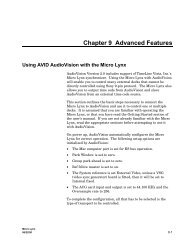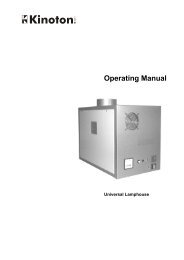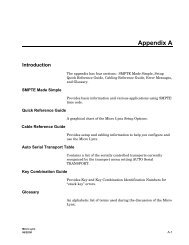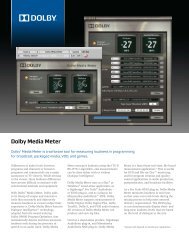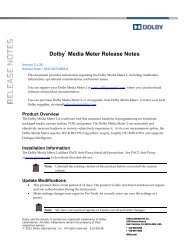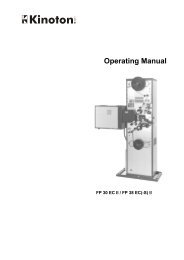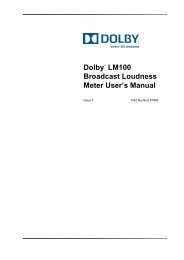HP LTFS Linear Tape File System user guide
HP LTFS Linear Tape File System user guide
HP LTFS Linear Tape File System user guide
Create successful ePaper yourself
Turn your PDF publications into a flip-book with our unique Google optimized e-Paper software.
Table 1 <strong>LTFS</strong> compatibility<br />
<strong>LTFS</strong> application<br />
v1.1.0 or earlier<br />
v1.2.0 or later<br />
Cartridge written by <strong>LTFS</strong> application<br />
v1.1.0 or earlier<br />
Read/Write ok<br />
Readable ok; will automatically be<br />
converted to new format if written<br />
Cartridge written by v1.2.0 or later<br />
Cannot be mounted<br />
Read/Write ok<br />
<strong>HP</strong> recommends that all instances of <strong>HP</strong> <strong>LTFS</strong> should be updated to v1.2.0 to avoid these<br />
compatibility issues.<br />
If, for some reason, it is important to maintain cartridges readable by previous versions of the <strong>HP</strong><br />
<strong>LTFS</strong> application, care should be taken to avoid writing to those cartridges with the new version<br />
of the application. This may be accomplished by mounting the volume as read-only, or by using<br />
the cartridge write-protect tab to prevent cartridge updates. However, this should be regarded as<br />
a temporary measure until all the application instances can be updated to v1.2.0.<br />
Use of sync_type options<br />
Previous versions of <strong>HP</strong> <strong>LTFS</strong> supported a single mechanism for updating the tape index, wherein<br />
the index was written to tape only when the volume was unmounted. In normal operation this is<br />
sufficient since the <strong>LTFS</strong> usage model requires the volume to be unmounted after use, so there is<br />
always a valid index. However, if power is removed from the drive without unmounting, for example<br />
due to an unplanned power outage or accidental unplugging, the volume will be left in an<br />
inconsistent state and all files added since the last dismount operation will be inaccessible. The<br />
ltfsck utility may be able to recover the file data to the _ltfs_lostandfound directory but<br />
the metadata (filename, access dates etc) will be lost.<br />
To address this exposure, <strong>HP</strong> <strong>LTFS</strong> v1.2.0 offers two additional mechanisms for updating the tape<br />
index. The first is to write a copy of the index to tape on a periodic basis whilst writing data; this<br />
is the new default behavior and the index is written out every five minutes. The time interval can<br />
be set with a resolution of one minute. This method of index update reduces the window of exposure<br />
to power loss events, since there will be an index on tape no more than five minutes old (if using<br />
the default interval).<br />
The second new mechanism provided in <strong>HP</strong> <strong>LTFS</strong> v1.2.0 is to update the index every time a file is<br />
closed after writing. This further reduces the exposure window to a single file, or (if several processes<br />
are using the volume simultaneously) to the number of files being written concurrently. However,<br />
this does add some overhead to <strong>LTFS</strong>, both in terms of the tape capacity used for each index, and<br />
also in terms of performance since the writing of the index will take bandwidth away from writing<br />
data. These overhead effects will become more severe with smaller file sizes.<br />
In most cases the default <strong>HP</strong> <strong>LTFS</strong> behavior offers the best solution, but the new features allow the<br />
behavior to be tailored to a particular situation. The following table summarizes the options now<br />
available for choosing when the index is updated.<br />
Usage details 11




